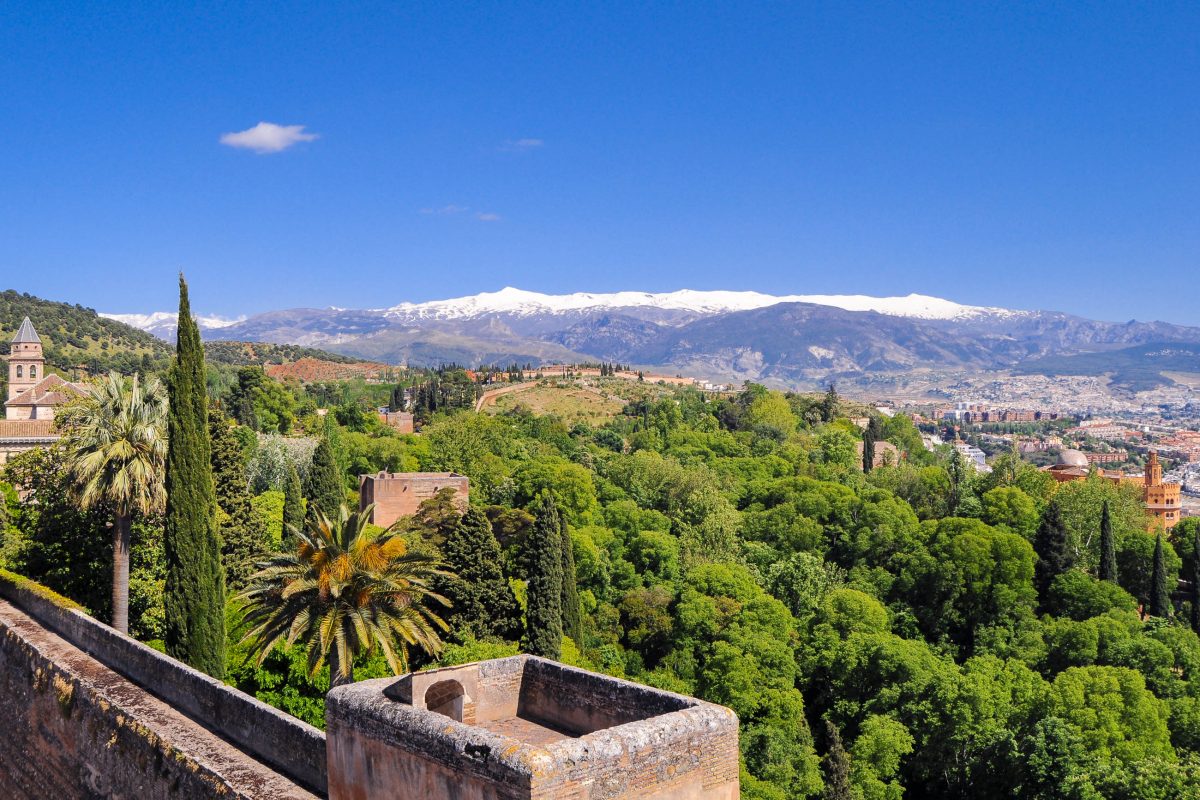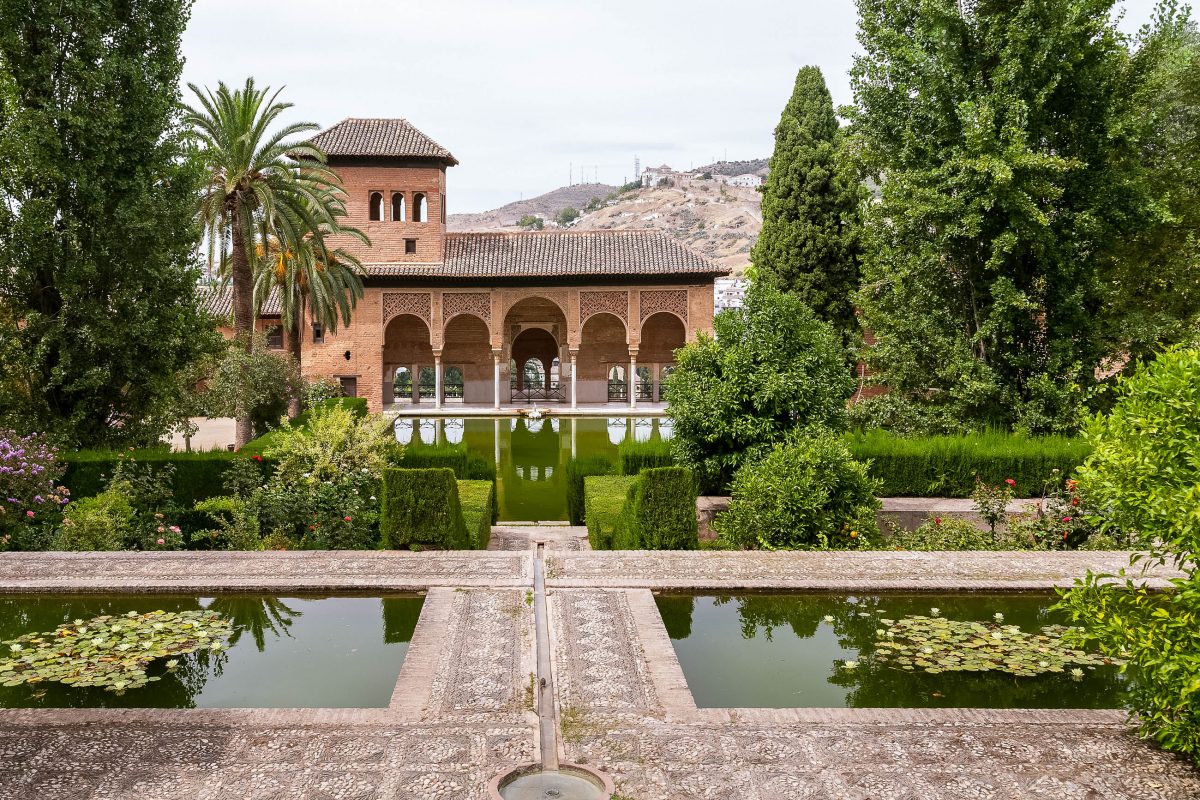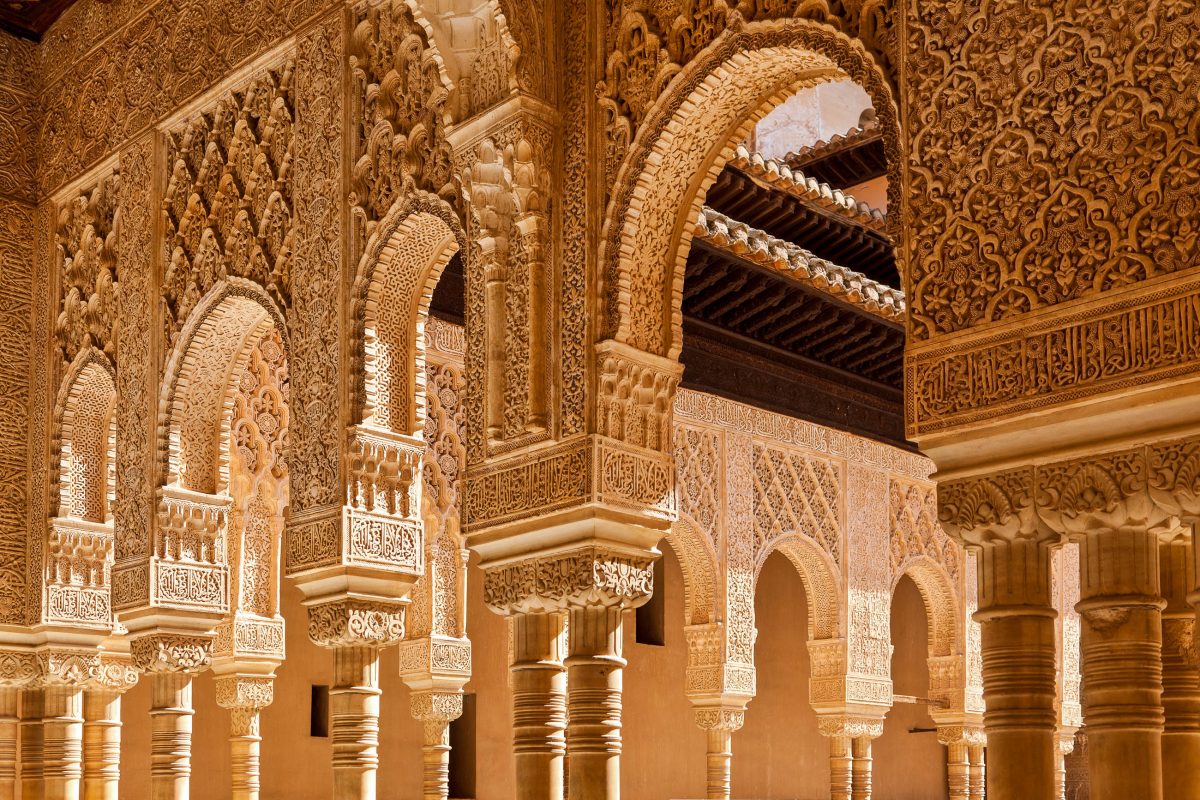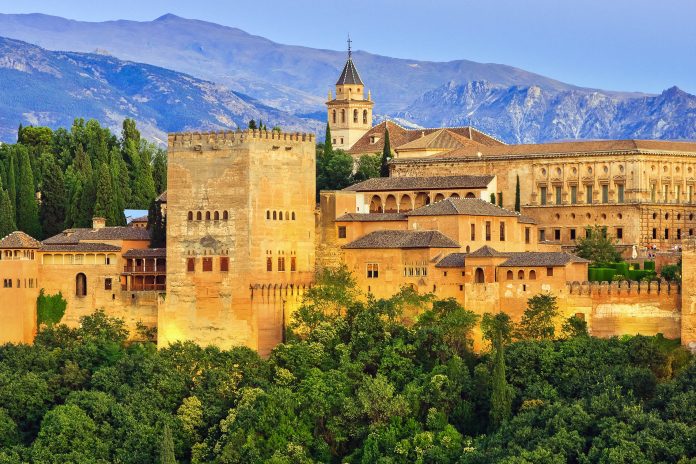Die Stadtburg Alhambra in Granada im Süden Spaniens zählt zu den bedeutendsten Touristenattraktionen Europas. Vor allem beeindruckend sind ihre mächtigen Mauern, der Palast von Karl V. und die überwältigenden Verzierungen an allen Ecken und Enden.
Die Stadtburg Alhambra in Granada im Süden Spaniens zählt zu unseren Top 10 Sehenswürdigkeiten von Spanien und den bedeutendsten Touristenattraktionen Europas. Die prachtvolle Burg im spanischen Andalusien zählt zu den schönsten islamischen Bauwerken im maurischen Stil und seit 1984 zum Weltkulturerbe der UNESCO.
Inhaltsverzeichnis
BILDER: Alhambra
Fotogalerie: Alhambra in Granada
Geschichte der Alhambra

Schon vor der Ankunft der Muslime im heutigen Granada standen Gebäude an jenem Ort, an dem später die Alhambra erbaut wurde. Die Lage der Alhambra auf dem Sabika, dem höchsten Hügel Granadas, bietet einen ausgezeichneten Blick über die Stadt und die Flussaue, was in früheren Zeiten einen erheblichen strategischen Vorteil brachte.
Die Alhambra wurde im 9. Jahrhundert zum ersten Mal schriftlich erwähnt, im 11. Jahrhundert in das befestigte Stadtgebiet eingebunden. Dadurch wurde sie fast ausschließlich als Festungsanlage genutzt, von der aus sich ganz Granada überwachen ließ. Erst der Nasridenherrscher Mohammed I. nutzte die Alhambra als Herrschersitz, was den Beginn ihrer Blütezeit markierte.
Seine Nachfolger Mohammed II und Mohammed III bauten sie weiter aus; unter Mohammed III wurden ein öffentliches Bad und eine Moschee errichtet, an deren Stelle heute die Kirche Santa María steht.
Woher der Name der Alhambra kommt, ist umstritten. Manche behaupten, er stamme von einem der Baumeister, andere meinen, der Name käme von der roten Farbe der Mauern. Der ursprüngliche arabische Name „qasr al-hamra“ bedeutet übersetzt „Rote Festung“.
Bauten in der Alhambra

Man findet in der Alhambra typische Elemente der andalusischen Architektur. Aufgrund des Bilderverbots im Islam findet man im Palast immer wieder Kalligraphien, mit denen Gedichte verschiedener Künstler an die Wände geschrieben sind.
Verteidigungsmauer und Alcazaba
Die Alhambra ist von einer mächtigen Mauer mit zahlreichen eckigen Burgtürmen umgeben. Ein Teil davon ist die Alcazaba, die Verteidigungsanlage des Gebäudekomplexes. Unter Mohammed III wurde die Alcazaba verstärkt, der Wachtturm und der Ehrenturm, sowie eine Wasserleitung vom Río Darro wurden hinzugefügt. Die Herrscher Jusuf I und Mohammed V verbesserten die Alcazaba noch weiter, sie vergrößerten die Festungsanlage und die Türme und schufen das eindrucksvolle Bild der Alhambra, wie man sie heute kennt.
Palast von Karl V.
Im Zuge der mittelalterlichen Reconquista eroberten die katholischen Herrscher Spaniens Granada von den Muslimen zurück und errichteten einige Bauten, wie zum Beispiel den Renaissance-Palast Karls V., dessen endgültige Fertigstellung erst im 20. Jahrhundert erfolgte. Für den Palast wurden Teile der Nasridenpaläste abgerissen. Diese bilden das Herzstück der Alhambra; früher befanden sich hier der Regierungssitz und die Gemächer der arabischen Herrscher. Heute sind in diesem Palast das Museum der Schönen Künste und das Museum der Alhambra untergebracht.
Garten der Alhambra

In der imposanten Palaststadt, in der auch die Kirche Santa María del Alhambra steht, sorgen idyllische Gärten für mediterranen Flair, in denen sich noch Fundamente früherer Gebäude wie Werkstätten und Wohnquartieren verbergen. Außerdem wurde hier ein Kloster errichtet, das dem Heiligen Franz von Assisi geweiht ist, das heute als Hotel fungiert. Zu den schönsten Gärten zählen der Comares-Hof mit seinen lang gestreckten Wasserbecken und die Daraxa-Gärten mit Zypressen- und Orangenhainen.
Wiederaufbau ab dem 19. Jahrhundert
Im 18. Jahrhundert war niemand mehr gewillt, zum Erhalt der Alhambra beizutragen. Ein Teil des Gebäudekomplexes wurde während der Zeit der französischen Besatzung gesprengt; erst im 19. Jahrhundert begannen die Restaurationen.
Besuch der Alhambra

Die Alhambra ist in ihrer Gesamtheit reich verziert. Selbst die Bögen in ihrem Inneren haben keine Stützfunktion, sondern sind ein rein dekoratives Element. Für die Besichtigung der Alhambra sollten etwa 2,5 bis 3 Stunden eingeplant werden. Auf dem gesamten Gelände befinden sich Brunnen mit Trinkwasser, verdursten muss also niemand. Verpflegung muss allerdings selbst mitgebracht, darf allerdings nicht in allen Räumen verzehrt werden.
Parkplätze sind direkt an der Alhambra vorhanden, zwei Wege führen auch zu Fuß auf den Burghügel: Vom Plaza Nueva über die knapp 1,5km lange Cuesta Gomerez oder vom Paseo de los Tristes über die rund 800m lange Cuesta de los Chinos.
Weiterführende Links:





